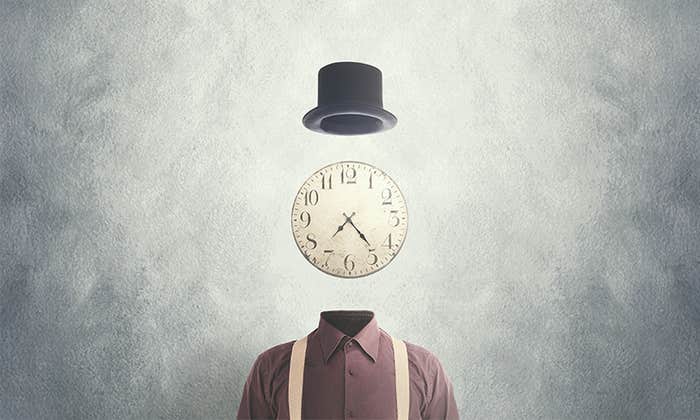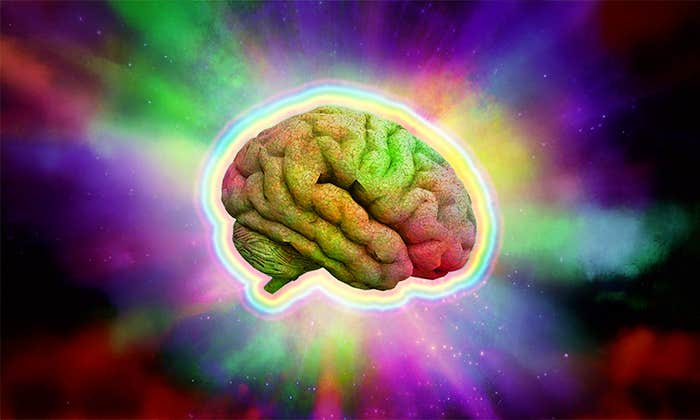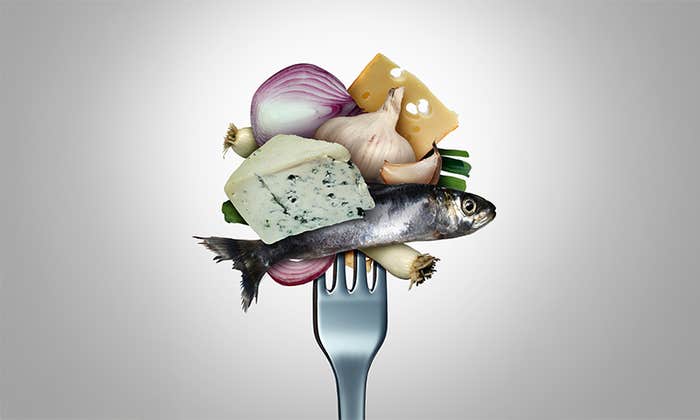For his next book, Joseph LeDoux knew he had to go deep. He had to go back in time, way back, 3.5 billion years ago. The author of the seminal The Emotional Brain, followed by Synaptic Self and Anxious, sensed a missing element in those books on how brain anatomy and function shape human behavior and emotions. That element was evolution. In his new book, The Deep History of Ourselves: The Four-Billion-Year Story of How We Got Our Conscious Brains, LeDoux takes readers back to the emergence of life on Earth to show what our protean brains today owe to the canny survival of Protozoa.
“I started asking, ‘How far back in evolution does the ability to detect and respond to danger go?’” he said to me in a recent interview at his home in New York City. LeDoux directs the Emotional Brain Institute at New York University. In his research and previous books, he has shown the human brain processes that detect and respond to danger differ from the conscious experiences of fear itself. “I felt I needed to understand more about this process,” he said. “I wanted to know what single-cell organisms teach us about emotion.”

The Deep History of Ourselves takes readers from past to present along a wonderfully readable path, defined by short chapters, paved with insights. LeDoux’s argument is our emotional systems are what make us uniquely human. He writes that “there is indeed good evidence that the same brain systems control survival behaviors in humans and other mammals, but that these are not the systems responsible for conscious feelings we experience when we engage in such behaviors.” Those conscious feelings belong to humans alone.
LeDoux is aware his argument runs counter to that of many animal experts like Frans de Waal and Jane Goodall, whose work underlines a connection between the emotions of non-human primates and us. As you will see in “The Tricky Problem of Other Minds,” LeDoux’s article in this week’s chapter in Nautilus, LeDoux carefully spells out, and documents, where humans differ from other animals in their emotional lives and experiences.
In my interview with LeDoux, I asked him to focus on the common misperception of emotions, as he sees them, and to clarify for us just what makes us unique from other animals. He did just that, with patience and passion.
What’s the most common conception of emotions?
That they are states that we share with animals and they drive our behavioral responses. Darwin said emotions are mental states we’ve inherited from our animal ancestors. It’s assumed that when we respond to danger, do things like freeze or flee, it’s because we’re afraid. When we feel pleasure, it’s because we’ve eaten something great. It’s true these states go with those kinds of behaviors, but the question is, do the states cause the behavior?
And do they? Do emotional states drive our behavior?
A lot of research, including mine, suggests that’s not the case. Take the example of subliminal stimulation. If you present stimuli to people in a way that they can’t consciously recognize it, they still have responses to it. One of the first studies was done in the 1950s. After being passively conditioned with a visual stimulus, the person’s heart was beating faster, even though they had no fear or any conscious experience of what the stimulus was.
We have 36 words in our language for variations of fear and anxiety.
Another example is blindsight, patients who don’t see stimuli in a blind spot, yet perform behaviors that show the stimuli were perceptually registered by the brain. If a person with blindsight sees a picture of a snake, their heart will beat faster and their palms will sweat, but they won’t know the stimulus is there and they won’t have any fear. Fear is not what’s causing it. The same stimulus is going into the brain, but it’s going to one set of circuits to produce the responses, and other circuits to generate the experience.
Why is fear universal if it’s not innate?
What’s universal is danger, not fear. Because danger has to be important in the life of every human, no matter what culture they’re in, they’re going to have a system for understanding that within their culture. They’re going to have a word for it or some words for it. We have 36 words in our language for variations of fear and anxiety. So the experience that’s going to arise is going to be culturally determined and is going to be personally determined.
So what, then, is an emotion?
It’s a conscious awareness that something psychologically or biologically important is happening to you. Evolution gave us these behavioral responses to stimulus, but those are not yet emotions.
Why did we evolve emotions?
I think of emotions as coming along in the way that Stephen J. Gould described certain things as exaptations, which is a kind of a variation of his more famous term, which was spandrel. A spandrel is something that exists without having a function, and he used the so-called spandrels at San Marco and Venice, arches in the architecture that created a space where you could put pictures or flowers. They weren’t designed for that, but because they existed, it was useful to use them. A good example of an exaptation is that feathers originally arose in bird-like reptiles for warmth, but then they were co-opted for flight in the wings.
How are emotions exaptations?
I see emotions as the result of other exaptations. One is language. We had certain kinds of communicative skills, and we put these together with other capacities, such as hierarchical relational reasoning, the ability to do mental time travel, to project yourself into the past and the future.
An important part of these ideas is the self. I have a motto, “No self, no fear.” If you don’t know you’re in harm’s way, then you’re not going to experience fear. You can react to it, you can protect yourself, but until you know that it’s you, it’s not the conscious experience that invades your mind. The stimulus of danger is going into the brain. But it’s going to one set of circuits to produce the responses, and other circuits to generate the experience. Now, the responses are going to contribute to the experience, but don’t determine it.
Other scientists argue emotions are more hardwired circuits in our brains. They say we can read emotions in people’s faces because they’re signifiers of these ingrained emotions. Why are they wrong?
It’s the difference between correlation and causation. The facial expressions are innate, and they often occur when we are afraid or happy or whatever the basic emotion in question is. But in the brain, I think that those are separately controlled. So the fear does not cause the grimace or whatever you would call the fear facial expression. Those things happen in parallel rather than in sequence.
So if someone smiles, am I not necessarily right to say they’re happy?
If you did that, you’d probably be correct many times. But in the case of fear, there are instances where we can dissociate those things. I suspect you could do that with other emotions as well. A lot of the reason we can do this so well in the case of fear is because there are good animal models for studying them. We know that the circuit underlying the behavioral and physiological responses to danger is pretty much the same in non-human animals and human animals.
And that’s the amygdala, right?
Right.
I think, basically, the mind is a narrative generator.
What is the amygdala?
The amygdala is a small region in the temporal lobe. We say “the amygdala,” but there are two amygdalas. Amygdalae. Traditionally it’s thought of as the fear center, an idea for which I’m partly responsible, maybe largely responsible, through my book The Emotional Brain. But I was a little sloppy with the language, even though back then I was saying the amygdala is an implicit fear circuit, and the explicit fear, the conscious fear, is a cortical process. Still, over time, the amygdala has been become a term for a fear center, not an implicit fear center, and that’s what I’ve been trying to correct.
The amygdala is not where you consciously experience fear. It’s just a way station in the flow of information from the sensory systems into the motor systems. You can have a person with amygdala damage who can still feel fear. Given that fact, the amygdala can’t be making fear. It’s making behavioral responses, but not the experience of fear. Let’s say there’s a snake at your feet. That’s probably enough to activate a fear schema in your circuits and begin to pattern-complete a concept of the situation you’re in. That concept is then the foundation of the conscious experience.
We’re not conscious of the foundation, right?
Right. Most of what the brain does is not conscious. Up until the moment when something crosses that threshold of consciousness, it’s not conscious. So every conscious experience is based on a flow of information that’s not conscious, that somehow reaches the threshold. So these schema are non-conscious, but they are the kinds of things that can rise up.
How do you know you’re right?
I don’t. But my research on this goes back to my Ph.D. in 1978. My Ph.D. research was all on split-brain patients and conscious experience. I wanted to understand how non-conscious behaviors could be dealt with simultaneously with these conscious experiences. We’d generate behaviors in patients’ right hemisphere, and then we’d ask the left hemisphere, “Why’d you do that?” And the left hemisphere would generate an explanation, even though it had no idea. So there’s this idea of these narratives that come out of observing your behavior, because it causes cognitive dissonance if you’re seeing a behavior you didn’t perform. We have free will. We control our behavior, and if we’re not controlling our behavior, something is wrong. So that’s where this idea of narratives comes from. I think, basically, the mind is a narrative generator. It’s all about generating mental models of situations.
To explain what?
To explain what we’re doing and why we do it. The other thing is motivation. We know what we do, we see it. But why we do it is less clear. So we’re often compelled to generate an explanation for our motivations because then we feel that we’re in charge of ourselves.
Is that explanation subjective? Is it going to be subjective to each person?
Absolutely.
Are emotions, then, just subjective narratives?
They are.
You disagree with scientists who claim animals have emotions. Why don’t animals have emotions comparable to ours?
I know I’m accused of saying animals have no emotion. I don’t say that. I say that whatever they have, they don’t have what we have. Every human has a human brain. Every animal has their own brain. And they’re different. Some parts of the brain involved in conceptualizations of what emotions are have unique properties in the human brain. It’s based on the difference between autonoetic and noetic consciousness, which is an idea that Endel Tulving gave us about memory, and I’m using to extend to emotion.
The architecture of language made emotions possible.
What is autonoetic consciousness?
It’s a consciousness in which the self is involved. The self is subject as opposed to object. To have an emotion, as I mentioned, your self has to be involved. Animals can have past memory and perspective cognition. They can project and experience something that’s going to happen in the future. But the question is, can they put themselves into it? Even the best people in the animal-studies field say they don’t know if the animals can have this sense of self the way that humans can. I think that’s the right approach.
In his recent book, Mama’s Last Hug, Frans de Waal writes, “Emotions are like organs. They are all needed, and we share them with other mammals.” He goes on to say, “All emotions are both biological and essential. None is more basic than the others, and none are uniquely human.” What do you think of that statement?
I agree with him that none are more basic than the others, but they do have a unique, human sense. Animals have semantic knowledge, not in the sense of words, but of facts. Animals have a lot of facts in their lives. They have facts about where there’s food, and may have an experience that goes along with that. But do they have the sense of self that allows them to know that it’s them that is having the experience?
Do they?
No. The self as a psychological entity is different from the self as an objective body. Many animals may have a body-self sense. They know their body versus another body or another animal. But they don’t have a psychological sense that they own their own body, that it’s something that they’re aware of as a possession of their mind.
Jane Goodall and Temple Grandin repeatedly say animals have feelings.
Yeah, but on the basis of what? Nothing.
On the basis that we share a similar anatomy.
My argument is that anatomy is the wrong anatomy, that emotions are cognitive-assembled states in higher areas of the brain, in the prefrontal cortex, with circuits and cellular components that other animals don’t possess.
What is the one brain component we have that animals don’t have?
The frontal pole.1 It’s a unique region in the human brain. Other primates, some apes, have some tiny version of the frontal pole. But there’s a unique aspect of it in the human brain that’s involved in higher-order conceptualization. My whole point is that emotions are higher-order conceptualizations, so that’s where I put my money.
Doesn’t our language differentiate us from animals, too?
Yes, but that doesn’t mean it’s all about words or any specific thing about language, except that language has rewired our brains to think in different ways. Daniel Dennett has said, “language lays down tracks on which thoughts can travel.” It allows us to do all kinds of things, like simulate in a fraction of a second of who’s going to do what to whom in a social situation. We have syntax that parses those kinds of things.
Are you saying we need language for emotions?
We need the architecture of language because that’s one of the spandrel exaptations that made emotions possible.
So animals don’t have language?
They have communication, but not language.
So does that also explain why animals can’t have emotions?
They can’t have what we call emotions, or the way we understand emotions.
Like anger, shame, jealousy?
They might behave in a way that’s consistent with those. But do they have the experiences of them is the question. And if they did, how would you know? You can’t ask them because all they do is behave. Here’s the thing. A human can do two things to respond to a conscious stimulus. You present me with an apple, I can say, “That’s an apple,” or I can pick up the apple. I can respond verbally or non-verbally to something I’m conscious of. But if I’m not conscious of something, I can only respond non-verbally. I can’t give a verbal response. Animals don’t have that alternate response, one different from the non-verbal response. All they have is the non-verbal. I’m not saying they don’t have something, but scientifically, how do you study that?
If readers came away from The Deep History of Ourselves with only one idea, what would you like that idea to be?
That we can’t take the obvious as fact. Just because things seem a certain way doesn’t mean they are. Just because we are running from the bear and feeling afraid at the same time, that doesn’t mean our behavior and emotions have the same cause. To understand the causes, we have to study them. We can’t simply study them psychologically. We have to figure out what’s going on in the brain. When we do that, we see these things are controlled separately in the brain. They interact but fundamentally they’re triggered separately. One has an evolutionary history that we can trace to the beginning of life, and the other is something that is unique to our species.
Kevin Berger is the editor of Nautilus.
Lead illustration: miniwide / Shutterstock
Footnotes
1. See LeDoux’s accompanying article in this chapter of Nautilus, “The Tricky Problem of Other Minds,” for a more in-depth description of the frontal pole in the human brain.


























